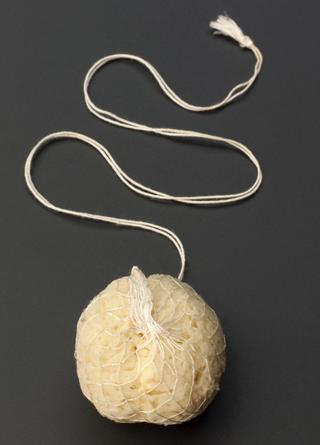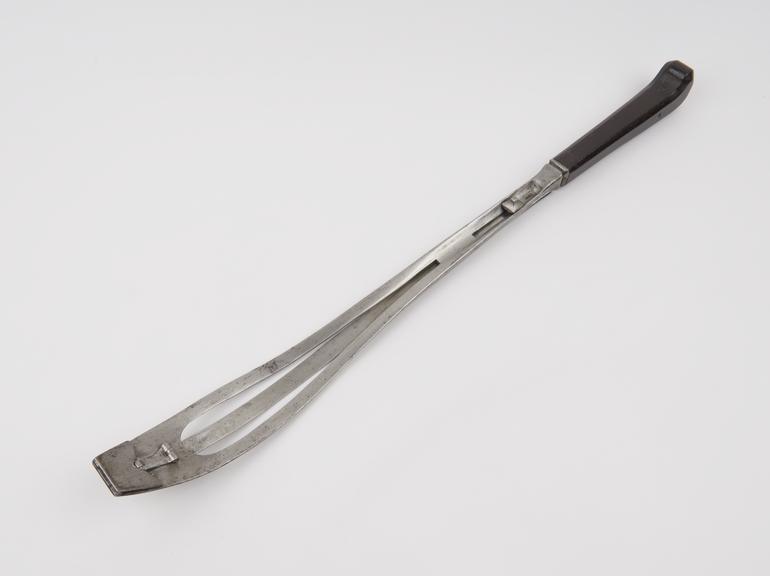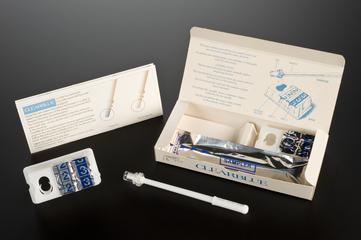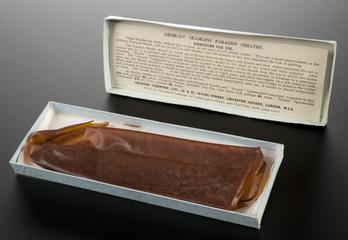




Vectis and crochet, steel and wood, 1750-1900
Obstetric physicians were also known as man-midwives. They were not normally present in routine births during the 1700s and 1800s. However, they might be called to assist if complications arose. This combined vectis and crochet tool was one of many instruments the physician brought to the birth. A vectis is a lever-type instrument for altering the position of the baby’s head. It also acts as a lever to ease the head out. A crochet tool was a destructive instrument. It extracted a dead foetus from the mother's body. This multi-purpose example is spoon-shaped to cup the baby’s head. The ‘hook’ unfolds by sliding a small lever in the handle.
Details
- Category:
- Obstetrics, Gynaecology & Contraception
- Collection:
- Sir Henry Wellcome's Museum Collection
- Object Number:
- A615454
- Measurements:
-
overall: 40 mm x 470 mm x 45 mm, .265kg
- type:
- obstetrical vectis




